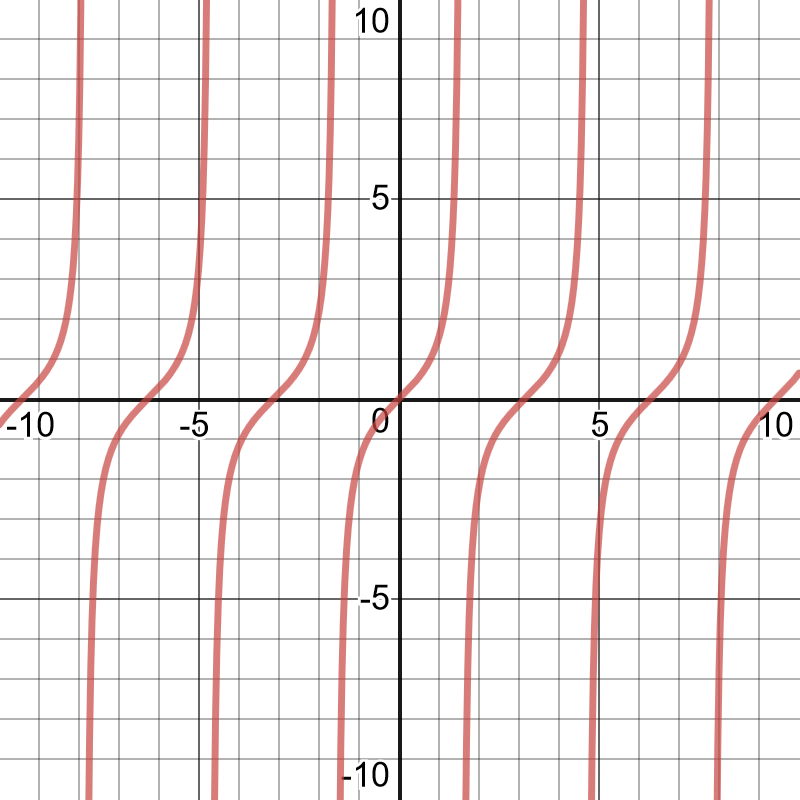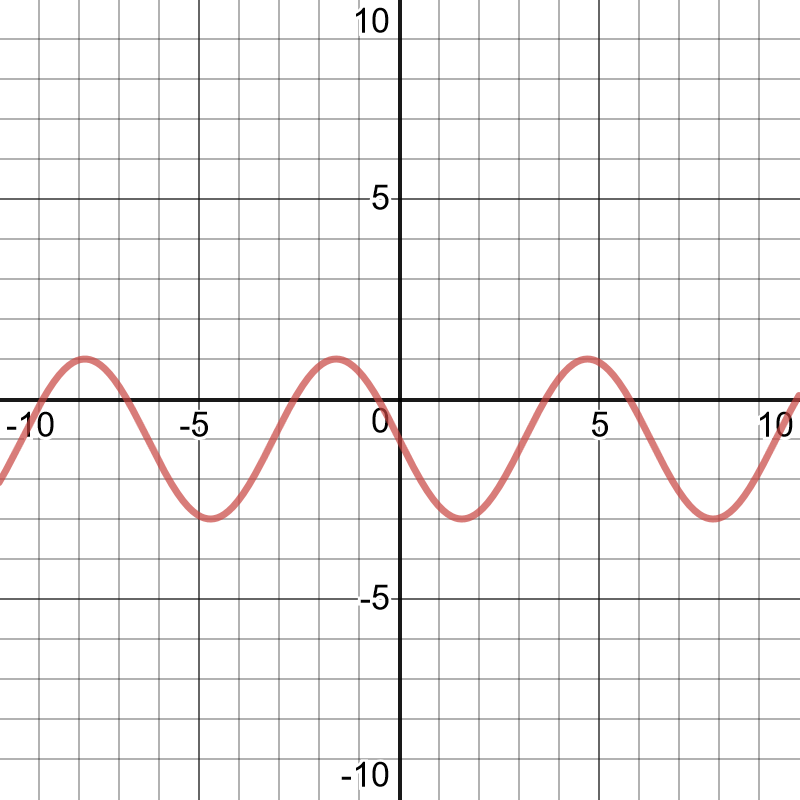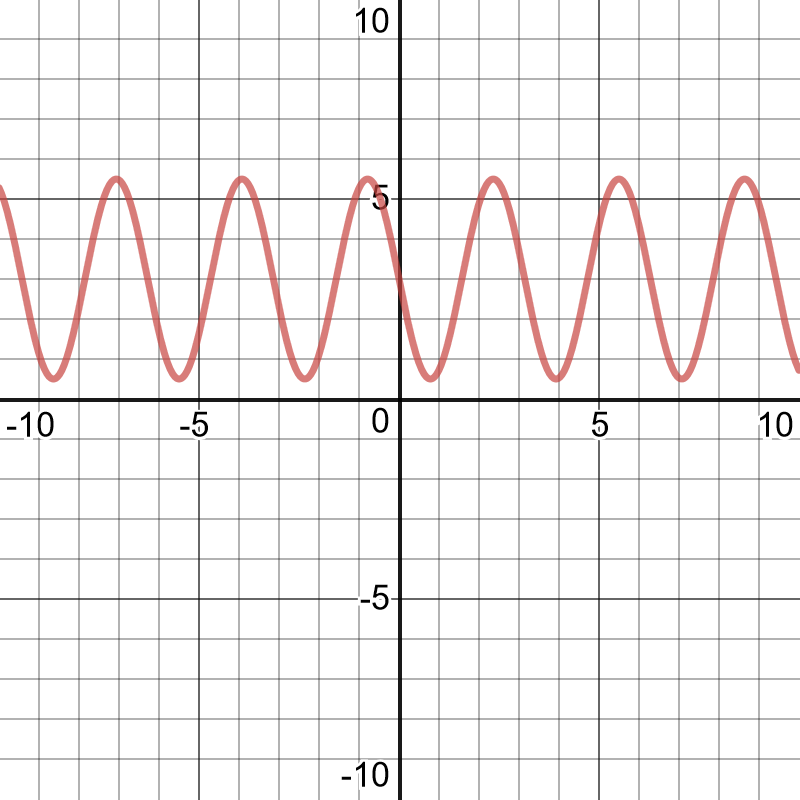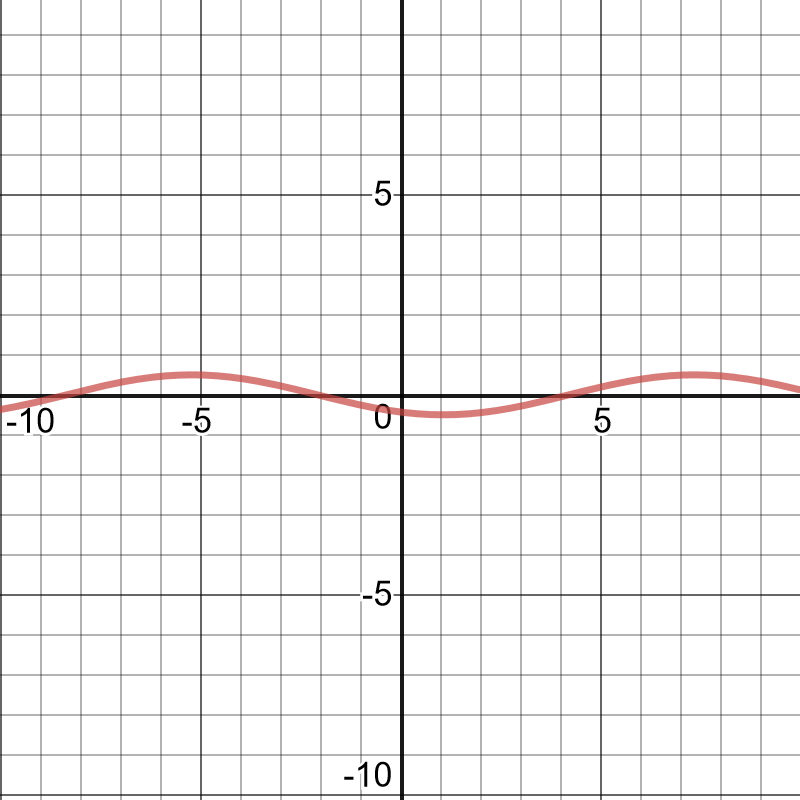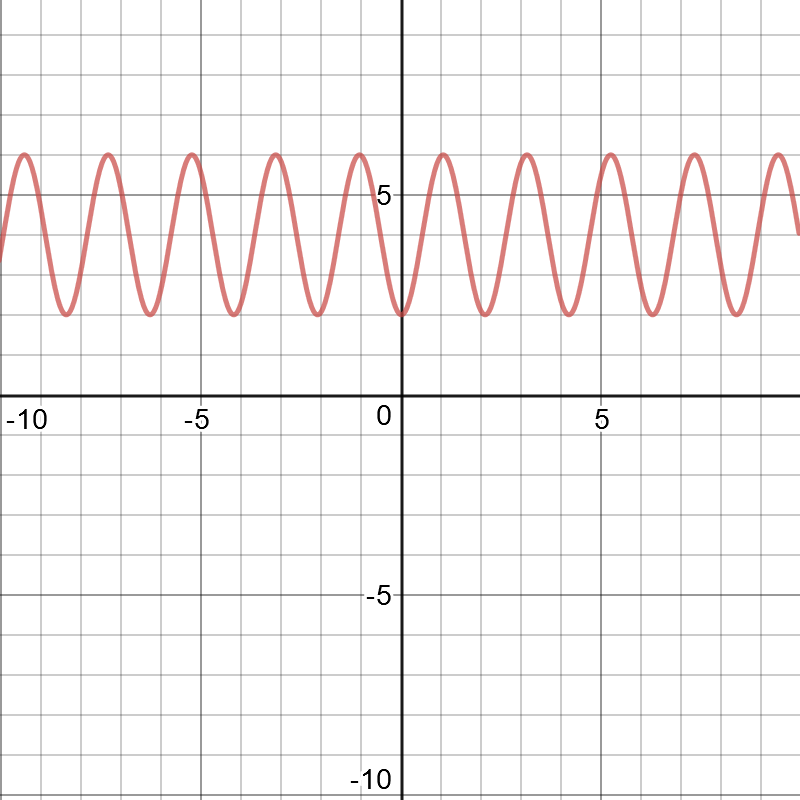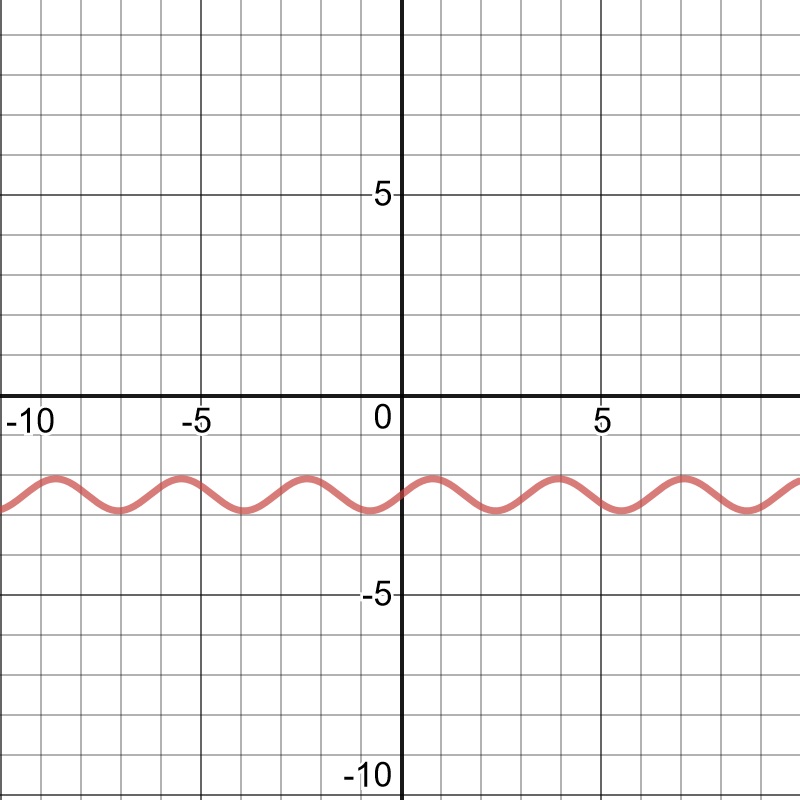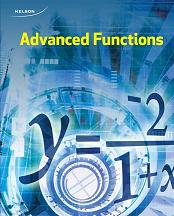
All Solutions
Page 349: Practice Questions
$dfrac{cancel{pi}}{8}cancel{radians}timesleft(dfrac{180^{circ}}{cancel{pi radians}} right)=22.5^{circ}$
#### (b)
$4cancel{pi}cancel{radians}timesleft(dfrac{180^{circ}}{cancel{pi radians}} right)=720^{circ}$
#### (c)
$5cancel{radians}timesleft(dfrac{180^{circ}}{cancel{pi radians}} right)=286.5^{circ}$
#### (d)
$dfrac{11cancel{pi}}{12}cancel{radians}timesleft(dfrac{180^{circ}}{cancel{pi radians}} right)=165^{circ}$
$125^{circ}=125^{circ}timesleft(dfrac{pi radians}{180^{circ}} right)=2.2 radians$
#### (b)
$450^{circ}=450^{circ}timesleft(dfrac{pi radians}{180^{circ}} right)=7.9 radians$
#### (c)
$5^{circ}=5^{circ}timesleft(dfrac{pi radians}{180^{circ}} right)=0.1 radians$
#### (d)
$330^{circ}=330^{circ}timesleft(dfrac{pi radians}{180^{circ}} right)=5.8 radians$
#### (e)
$215^{circ}=215^{circ}timesleft(dfrac{pi radians}{180^{circ}} right)=3.8 radians$
#### (f)
$-140^{circ}=-140^{circ}timesleft(dfrac{pi radians}{180^{circ}} right)=-2.4 radians$
$10(2pi)=20pi$
#### (b)
$omega=dfrac{20pi}{5}=4pi radians/s$
#### (c)
Circumference$=2pi(19)=38pi$
$38pitimes10 revolutions=380pi$ cm
$$
sin dfrac{3pi}{4}=dfrac{1}{sqrt{2}}=dfrac{sqrt{2}}{2}
$$
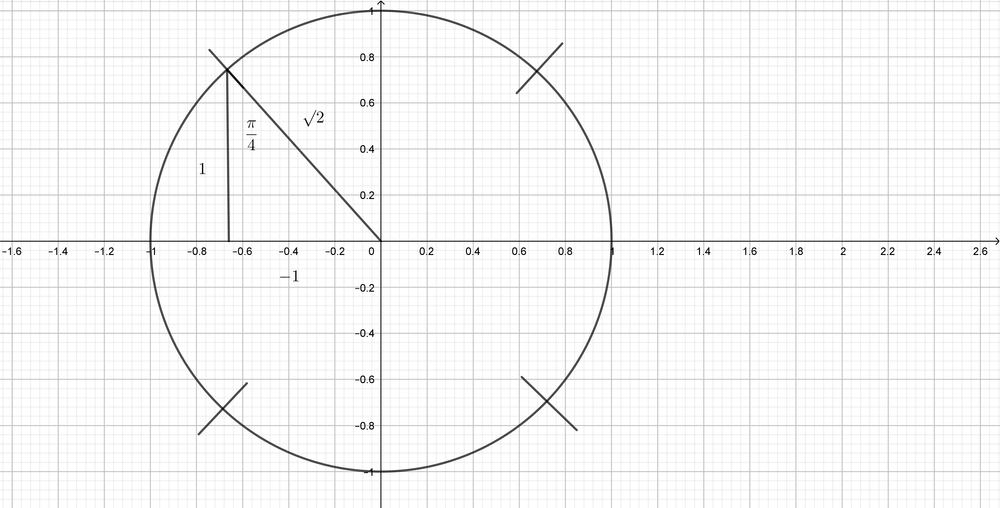
$$
sin dfrac{11pi}{6}=-dfrac{1}{2}
$$

$$
tan dfrac{5pi}{3}=-sqrt{3}
$$
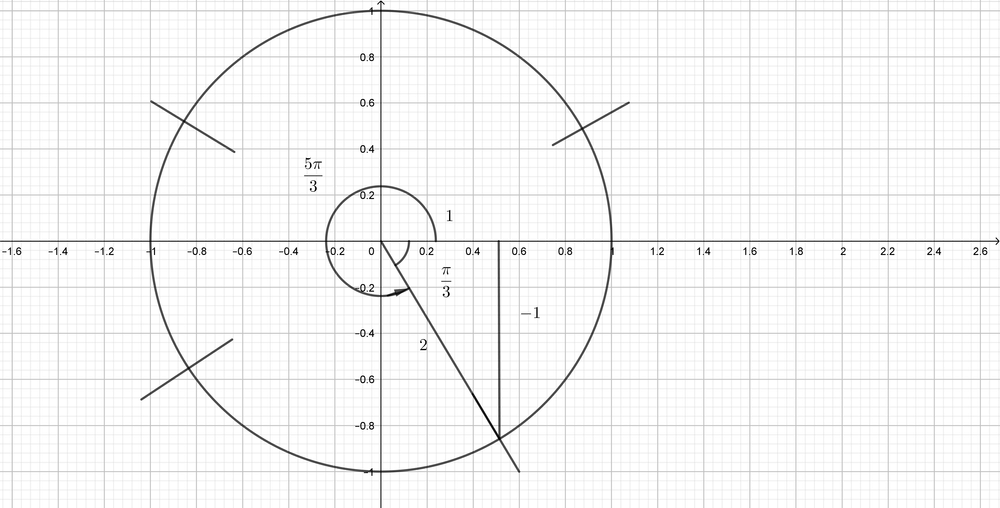
$$
tan dfrac{5pi}{6}=-dfrac{1}{sqrt{3}}=-dfrac{sqrt{3}}{3}
$$
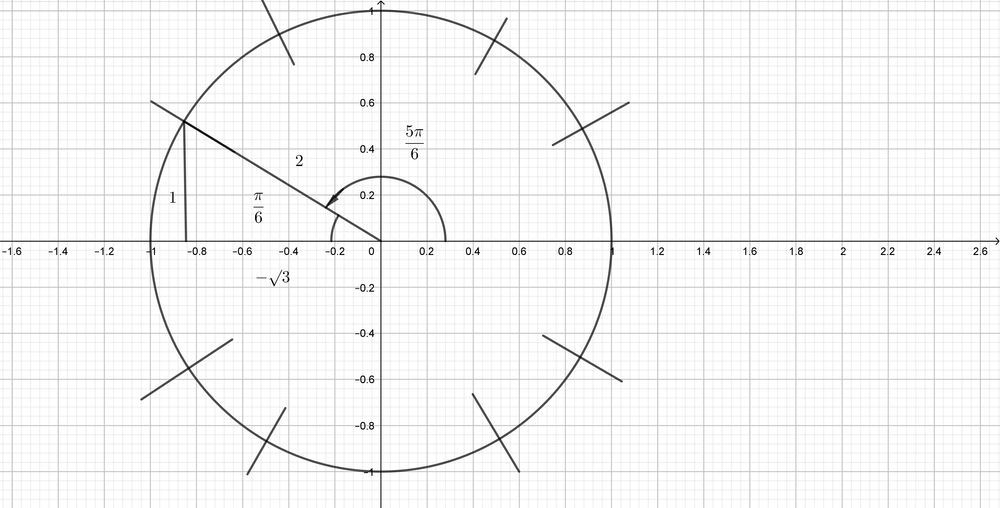
$$
cos dfrac{3pi}{2}=dfrac{0}{1}=0
$$
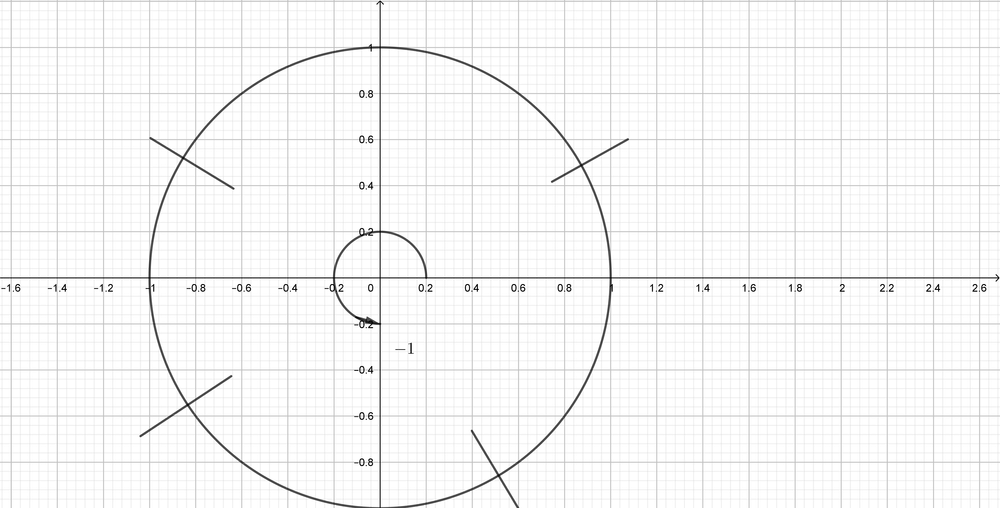
$$
cos dfrac{4pi}{3}=-dfrac{1}{2}
$$
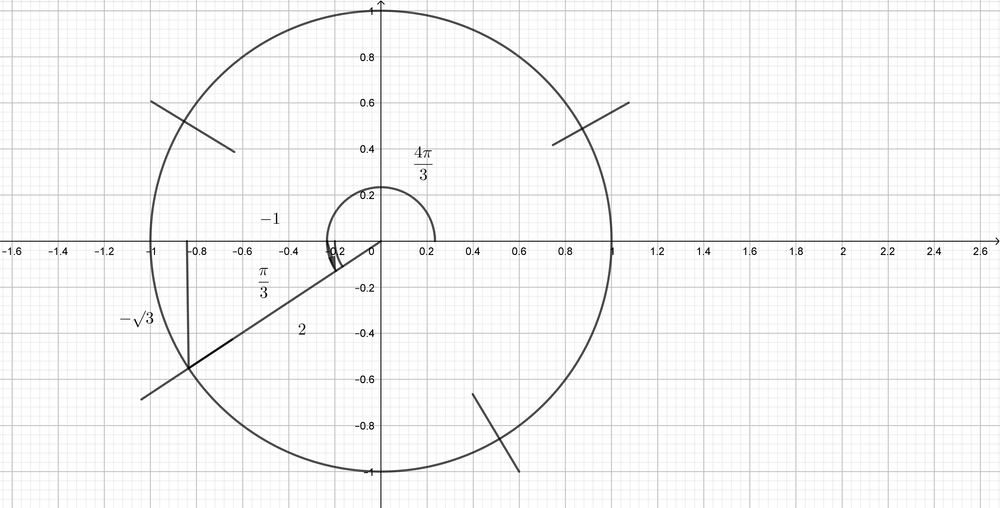
$(-3,14)=-1.360$
$tan^{-1}left(dfrac{14}{-3} right)=-1.360$
$theta=pi-1.360=1.78$
#### (b)
$(6,7)$ is in the first quadrant.
$tan^{-1}left( dfrac{7}{6}right)=0.86$
#### (c)
$(1,9)$ is in the first quadrant.
$tan^{-1}left(dfrac{9}{1} right)=1.46$
#### (d)
$(-5,-18)$ is in the third quadrant.
$tan^{-1}left(dfrac{-18}{-5} right)=1.30$
$theta=pi+1.30=4.44$
$(2,3)$ is in the first quadrant.
$tan^{-1}left(dfrac{3}{2} right)=0.98$
#### (f)
$(4,-20)$ is in the fourth quadrant.
$tan^{-1}left(dfrac{-20}{4} right)=-1.373$
$theta=2pi-1.360=4.91$
This is in the second quadrant where sine is positive.Sine is also positive in the first quadrant.
So, an equivalent expression would be $sindfrac{pi}{6}$.
#### (b)
This is in the fourth quadrant where cotangent is negative.Cotangent is also negative in the second quadrant.So, an equivalent expression would be $cotdfrac{3pi}{4}$.
#### (c)
Secant is undefined at $-dfrac{pi}{2}$. It is also undefined at $dfrac{pi}{2}$. So, an equivalent expression would be $sec dfrac{pi}{2}$.
#### (d)
This is in the third quadrant where cosine is negative. Cosine is also negative in the second quadrant.So, an equivalent expression would be $cosdfrac{5pi}{6}$
.
$x=0, pmpi, pm 2pi,…; y=0$
#### (b)
$x=pmdfrac{pi}{2}, pmdfrac{3pi}{2}, pmdfrac{5pi}{2},…; y=1$
#### (c)
$x=0, pmpi, pm 2pi,…; y=0$
